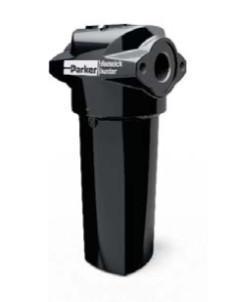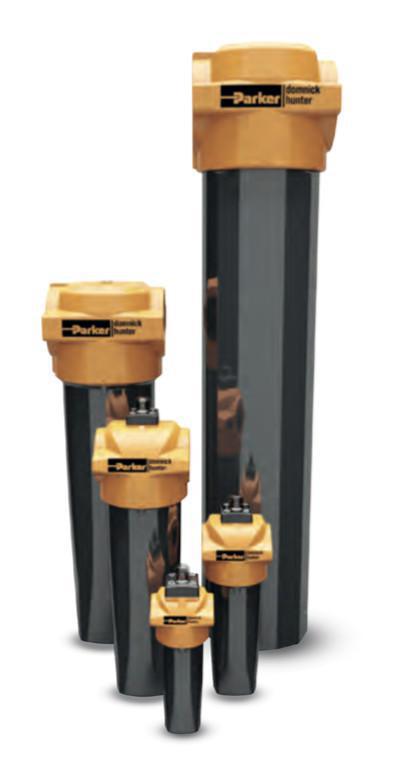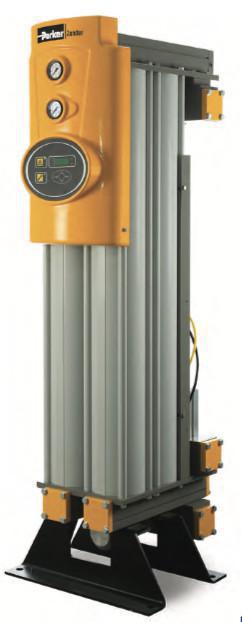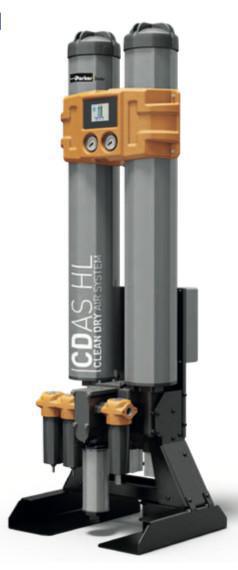Compressed air - the 4th utility - is a safe and reliable power source that is widely used throughout industry.
Approximately 90% of all companies use compressed air in some aspects of their operations, but unlike gas, water and electricity, compressed air is generated on-site, giving the user responsibility for air quality and operational costs. However, untreated compressed air will cause major performance and reliability problems with any system. Almost all of these can be directly attributed to contamination.
After generation, compressed air typically contains up to 10 different contaminants as it enters the distribution system, Modern production facilities are increasingly becoming more complex and as compressed air applications become more critical, compressed air purification is essential.
Parker domnick hunter specializes in purification and separation technologies, where compressed air and gas purity, product quality, technological excellence and global support are paramount.
Parker domnick hunter will help you selecting the right product from its comprehensive range of purification products base on the ISO 8573-1:2001 Air Quality Standard to exactly match your system requirements and to ensure that both capital and operational costs are kept to a minimum.
A solution for every contaminant
1. Water Separators
Water separators are used to protect coalescing filters against bulk liquid contamination, where excessive cooling takes place in air receivers and distribution piping. Using mechanical separation techniques, Parker domnick hunter water separators will remove in excess of 92% bulk liquid contamination at all flow conditions.
2. Coalescing Filters
Coalescing filters are probably the single most important items of purification equipment in a compressed air system. They are designed to not only remove aerosols (droplets) of oil and water using mechanical filtration techniques, but also to remove solid particulate to very low levels (as small as 0.01 micron in size). Installed in pairs, the first filter is a ‘general purpose filter’ which protects the second ‘high efficiency filter’ from bulk contamination. The dual filter installation from Parker domnick hunter ensures a continuous supply of high quality compressed air with the additional benefits of low operational costs and minimal maintenance.
3. Adsorption (Activated Carbon) Filters
Oil vapor is oil in a gaseous form and will pass through a coalescing filter just as easily as the compressed air. Therefore, oil vapor removal filters must be employed as these provide a large bed of activated carbon adsorbent for the effective removal of oil vapor, providing the ultimate protection against oil contamination.
4. Adsorption Dryers
Water vapor is removed from compressed air using an adsorption dryer. Adsorption dryers remove moisture by passing air over a regenerative desiccant material which strips the moisture from the air. This type of dryer is extremely efficient. A typical pressure dewpoint specified for an adsorption dryer is -40°F (-40°C) as it not only prevents corrosion, but it also inhibits the growth of micro-organisms. A pressure dewpoint of -100°F (-70°C) is often specified for critical applications.
5. Refrigeration Dryers
Refrigeration dryers work by cooling the air, so are limited to positive pressure dewpoint ratings to prevent freezing of the condensed liquid. Typically used for general purpose applications, they provide pressure dewpoints of +37.4°F (+3°C), +44.6°F (+7°C) or +50°F (+10°C). Refrigeration dryers are not suitable for installations where piping is installed in ambient temperatures below the dryer dewpoint i.e. systems with external piping, or critical applications such as food, beverage or pharmaceuticals as they do not inhibit microbiological growth.
As adsorption or refrigeration dryers are designed to remove only water vapor and not water in a liquid form, they require the use of coalescing filters to work efficiently.
6. Dust Removal Filters
Dust removal filters are used for the removal of dry particulates. They provide identical particulate removal performance to the equivalent coalescing filter and use the same mechanical filtration techniques to provide up to 99.9999% particle removal efficiency.
7. Sterile Filters
Absolute removal of solid particulates and microorganisms is performed by a sieve retention or membrane filter. They are often referred to as sterile air filters as they also provide sterilized compressed air. Filter housings are manufactured from stainless steel to allow for in-situ steam sterilization of both the filter housing and element. It is important to note that the piping between the sterile filter and the application must also be cleaned and sterilized on a regular basis.














